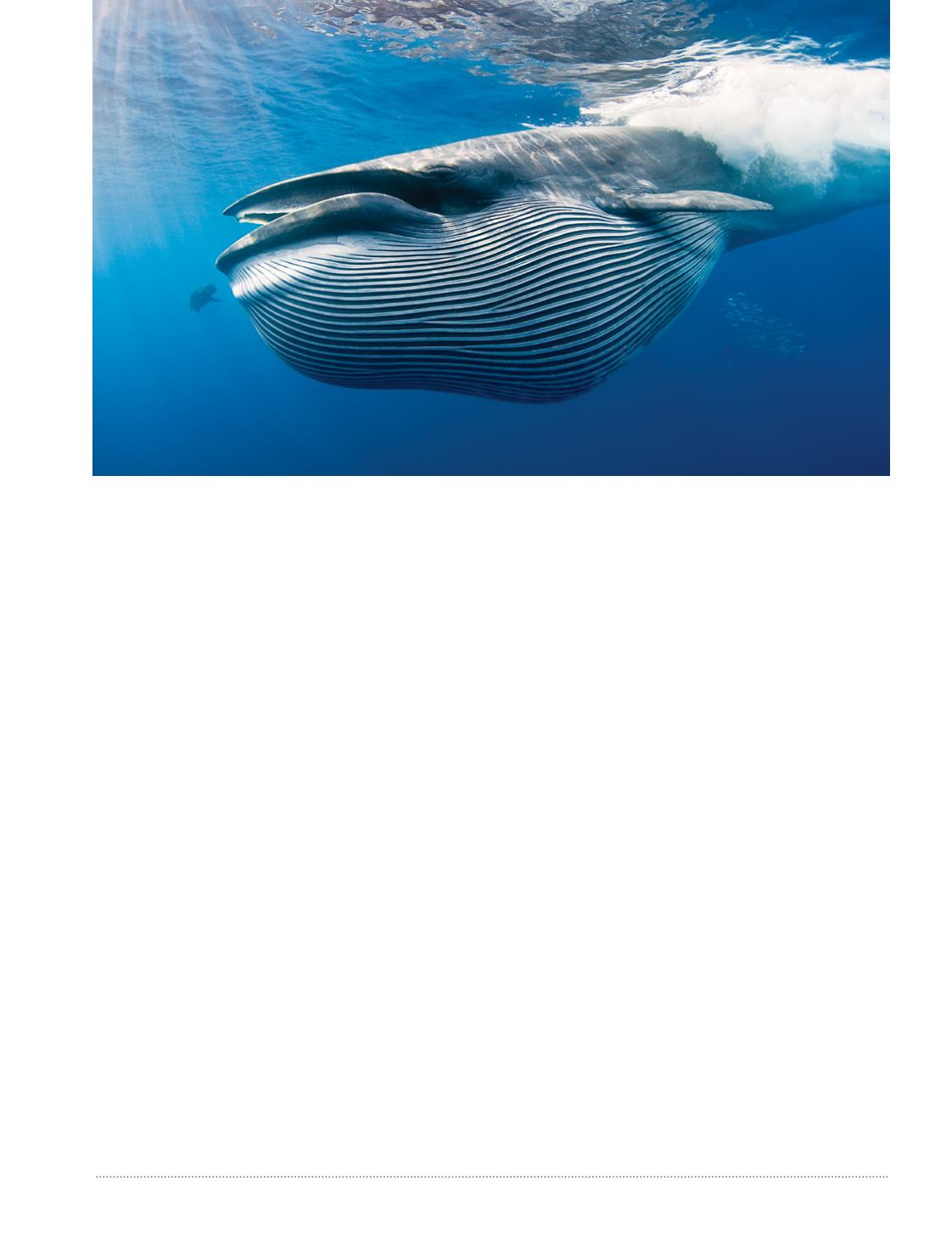
longer as unique as it was when I took
it. It was the grand-prize winner in
the 2004 Veolia Environment Wildlife
Photographer of the Year (WPOTY)
competition, sponsored by the Natural
History Museum in London and BBC
Worldwide. It was also the first photo
from a digital camera to win any award
in that competition. I would be surprised
if any images shot on film even made it
to the finals this year. I sank more than
$20,000 (which would be a lot more
in today’s dollars) into that sardine
run self-assignment over a three-year
period with long odds of earning any of
it back. Thanks largely to the publicity
fromWPOTY, I actually did recoup my
investment on that project. Not all my
expeditions have fared so well.
Another shot that earned back its cost,
which you may find hard to believe, is a
shot of a blue whale pooping. It expelled
a massive cloud of processed red krill,
and I took a shot just to document the
behavior. I never thought it would make
a nickel when I clicked the shutter, but,
oddly, it has done pretty well.
Other personal favorites include
a fisheye close-up of an eagle ray
with the sky and clouds visible above
and the “starry shore” image of
bioluminescent plankton washing up
on a beach at night.
SF
// Unlike many shooters today
who have known only digital, you’ve
been doing marine-life photography
long enough to have made a
conscious decision about when to
transition from film to digital.
What motivated your migration?
dp
//
I transitioned in 2003 with a
Canon EOS D60 6-megapixel camera. I
live on Kona, Hawaii, and my neighbor
at that time was James Watt, one
of underwater photography’s most
prolific and talented shooters and
a digital pioneer. He started with a
Canon EOS D30, but I couldn’t get
enthused about the 3-megapixel
quality, so I waited for the next
generation. I’m not one to be right
on the leading edge of technology, for
there are too many failure points, but I
try to be not too far behind either.
Today I shoot a Nikon D4 and a
D800 topside and a D800 in a Nauticam
housing underwater. I use either Ikelite
DS161 or Inon Z-220 strobes . The Inon
strobes get the nod when I’m traveling
where weight is restricted, but when I’m
shooting in my home waters of Hawaii I
typically use the more powerful Ikelites.
I’m also using an Olympus OM-D
E-M5 now, primarily because of airline
restrictions. It’s a small mirrorless
camera that, coupled with a Panasonic
8mm fisheye lens and a Nauticam
housing, creates a small wide-angle rig I
can use with a polecam or to swim after
rapidly moving pelagic animals.
The digital revolution is exciting but
challenging. Clients can’t lose the original
film you had to send them like they did
with a few of my favorite slides. Instead
of FedEx and next-day deadlines it is FTP
service and same-day deadlines. With a
laptop and Internet access I can transmit
images to clients from anywhere. Plus
I can photograph things I could only
dream of before — like my shot of
bioluminescence on the beach. That was
a 30-second exposure at ISO 2500. I saw
it in my mind’s eye back in the days of
film, but only the digital technology of
my Nikon D700 could make it a reality.
It used to be that I opened the box
of slides, threw away the bad ones and
put the good ones into archival sleeves.
I was done until it was time to send
them to a client. Now I get home from
a trip with thousands of digital pictures,
and before I can get through those
I’m off on the next trip to accumulate
thousands more. Sometimes I feel like
Hercules having agreed to clean the
Augean Stables. Not that I want my
images compared to horse poop, but
you know what I mean.
AD
|
99


